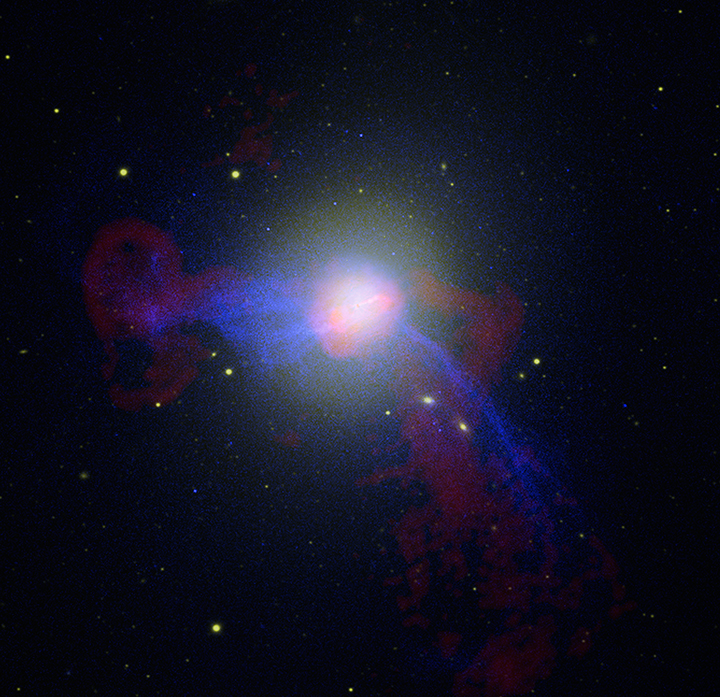
 Credit: X-ray: NASA/CXC/CfA/W. Forman et al.; Radio: NRAO/AUI/NSF/W. Cotton; Optical: NASA/ESA/Hubble Heritage Team (STScI/AURA), and R. Gendler
Credit: X-ray: NASA/CXC/CfA/W. Forman et al.; Radio: NRAO/AUI/NSF/W. Cotton; Optical: NASA/ESA/Hubble Heritage Team (STScI/AURA), and R. Gendler
Relics of a Giant's Past
Clusters of galaxies define the structure of the Universe for us. The nearest big cluster of galaxies lies in the constellation of Virgo. The Virgo cluster is only 50 million light years or so from our own Milky Way, and apparently has a real physical connection to the Local Group to which the Milky Way belongs. The largest of the 2000 or so galaxies that make up the Virgo cluster is M87, a giant elliptical catalogued by Messier. The image above shows a composite image of M87 in visible light (yellow), radio (red) and X-ray (blue). The visible image is from the Hubble Space Telescope, the radio image from the National Radio Astronomy Observatory's Very Large Array (NRAO/VLA), and the X-ray image from the Chandra X-ray Observatory. The X-ray and radio images show that the rather bland spheroid seen in the visible band hides interesting structure, like the plumes of particles moving near the speed of light seen in the radio (stretching from left to right in the image above), and bizarre X-ray loops and jets in blue. These structures are believed to be relics of the active past of the supermassive black hole that lies at the center of M87.
Published: August 11, 2008
<
HEA Dictionary ● Archive
● Search HEAPOW
● Other Languages
● HEAPOW on Facebook
● Download all Images
● Education ● HEAD
>
Each week the HEASARC
brings you new, exciting and beautiful images from X-ray and Gamma ray
astronomy. Check back each week and be sure to check out the HEAPOW archive!
Page Author: Dr. Michael F. Corcoran
Last modified Tuesday, 27-Feb-2024 10:06:46 EST


